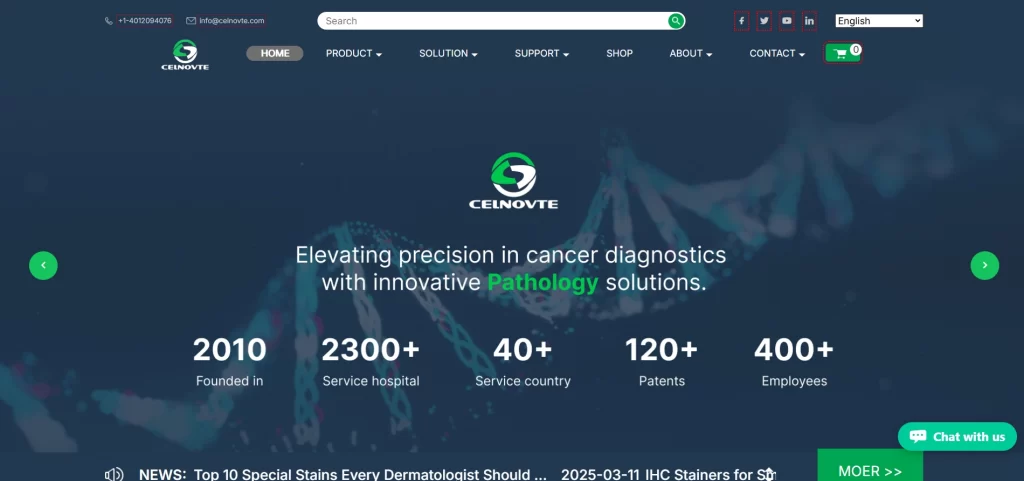How mIHC + AI Solves 5 Challenges in Traditional IHC

By admin
In biotech and drug research, immunohistochemistry (IHC) is a key method for studying proteins in tissue samples. But IHC limitations often slow down progress in understanding tough diseases like cancer. Multiplex immunohistochemistry (mIHC) paired with artificial intelligence (AI) offers a fresh, powerful solution. It tackles these issues with great accuracy and speed.
This blog looks at five major problems with traditional IHC and shows how multiplex immunohistochemistry benefits and AI pathology tools are changing research for the better.
Exploring Traditional IHC and Its Issues
Traditional IHC uses antibodies to find specific proteins in tissue slices. It helps diagnose diseases and find biomarkers. Yet, it has big drawbacks that slow down research, especially in cancer, immune, and brain studies. These include limited protein detection, slow manual work, and results that vary by person. With multiplex immunohistochemistry benefits and AI pathology tools, researchers can beat these hurdles and gain deeper insights into tissue environments.
Challenge 1: Limited Protein Detection in Single-Plex IHC
Traditional IHC, or single-plex IHC, can only spot one protein per tissue slice. This makes it hard to study multiple proteins without using many slices, which takes time and resources.
The Issue: Single-plex IHC can’t show how different cells or proteins interact in one sample. For example, studying immune cells like CD3+ T-cells or CD163+ macrophages with tumor markers like PD-L1 needs several slides. This uses up precious tissue.
The mIHC + AI Fix: Multiplex immunohistochemistry (mIHC)lets you detect 6-8 proteins on one slide using colorful dyes. For instance, Celnovte’s Multiplex Immunohistochemical (mIHC) Kit shows multiple proteins like CD3, CD8, and PD-L1 in a single section. When paired with AI pathology tools, it counts these proteins accurately. This saves tissue and reveals how cells work together in the tumor environment.
Challenge 2: Slow Manual Staining Work
Manual IHC staining takes a lot of effort. It involves steps like removing wax, preparing samples, and adding antibodies. These steps are prone to mistakes and slow down research.
The Issue: Staining one slide by hand takes hours. Doing many slides for different proteins is even slower. This delays big studies and drug trials where speed is key.
The mIHC + AI Fix: Staining automationwith tools like Celnovte’s CNT300 Full Automatic Multiplex IHC Stainer makes work faster. The CNT300 handles up to 30 slides in 2.5-4 hours. It uses adjustable reagent amounts, cutting down on manual work. AI tools make staining consistent, so researchers can focus on results, not repetitive tasks.
Challenge 3: Results Vary by Person
Traditional IHC depends on pathologists looking at slides. This can lead to different opinions and inconsistent results, especially for complex proteins like PD-L1.
The Issue: People see slides differently. For example, scoring PD-L1 in cancer samples often varies between viewers. This affects how patients are grouped for treatment.
The mIHC + AI Fix: AI pathology toolsuse smart computer programs to analyze slides. They give steady, reliable results. For example, AI can measure PD-L1 levels with high accuracy (e.g., AUC of 0.921 for multi-stained slides). mIHC adds more data by showing multiple proteins in one image. AI then maps how cells, like immune cells, are placed, making results clearer and more consistent.
Challenge 4: Limited Tissue Samples
Tissue samples, like biopsies, are often small. Using traditional IHC for multiple proteins can use up these samples quickly.
The Issue: To study different proteins, traditional IHC needs many tissue slices. This is tough for cancers like pancreatic ductal adenocarcinoma (PDAC), where samples are scarce.
The mIHC + AI Fix: mIHC saves tissue by detecting many proteins on one slide. For example, Celnovte’s mIHC Kitcan show up to eight markers, like CD4, CD8, and K17, in one section. This leaves tissue for other tests. AI boosts this by finding rare proteins using special signal boosting (tyramide signal amplification, TSA). It spots even small cell groups without needing extra tissue.
Challenge 5: Missing Complex Cell Interactions
Traditional IHC struggles to show how cells work together in diseases. This is vital for understanding things like how cancer avoids the immune system.
The Issue: Single-plex IHC can’t show how cells, like T-cells and macrophages, interact in the tumor environment. This limits its use in studying complex disease processes.
The mIHC + AI Fix: mIHC uses TSA and advanced imaging to capture detailed cell data. For example, it can show how CD20+ B-cells and CD16+ myeloid cells are placed in PDAC samples. AI tools, like nearest-neighbor programs, measure these interactions. This helps researchers understand immune evasion and develop targeted drugs. Celnovte’s CNT330 Full Automatic Multiplex IHC Stainerautomates staining for large datasets, keeping results steady.
Why mIHC and AI Work So Well Together
Multiplex immunohistochemistry benefits and AI pathology tools turn traditional IHC into a fast, data-packed process. Here’s a quick comparison:
|
Feature |
Traditional IHC |
mIHC + AI |
|
Protein Detection |
One protein per slide |
6-8 proteins on one slide |
|
Processing Time |
Hours per slide, done by hand |
2.5-4 hours for up to 30 slides, automated |
|
Result Consistency |
Varies by person |
Steady, AI-driven results with high accuracy |
|
Tissue Use |
Needs many slices |
Uses one slice, saves tissue |
|
Cell Interaction Insights |
Limited to multiple slides |
Detailed cell placement and interaction data via AI |
This teamwork fixes IHC limitations and speeds up drug research. It helps find new biomarkers, improve trial designs, and create personalized treatments.
About Celnovte Biotech
Celnovte Biotech is a top name in immunohistochemical tools, based in Zhengzhou, China, with offices in Shenzhen, Suzhou, and USA. They make the Multiplex Immunohistochemical (mIHC) Kit, which uses tyramide signal amplification (TSA) and MicroStacker™ Polymer Detection System for clear, multi-protein detection.
Their automated stainers, like the CNT300 and CNT330, make work faster and more precise. With ISO9001 and ISO13485 certifications, Celnovte’s high-quality antibodies and GMP-compliant facilities have earned top NordiQC ratings for six years, making them a trusted choice for research and diagnostics.
FAQs: Common Questions About mIHC
Q1: How is single-plex IHC different from multiplex immunohistochemistry?
A: Single-plex IHC finds one protein per tissue slice. It needs many slices for multiple proteins, using more tissue and time. Multiplex immunohistochemistry (mIHC) detects 6-8 proteins on one slice. It saves tissue and shows how cells interact in one image.
Q2: How does mIHC help cancer research?
A: mIHC improves cancer research by showing multiple proteins at once, like immune cell markers (CD3, CD8) and tumor proteins (PD-L1). It gives a clear view of the tumor environment, helping find new treatment targets and biomarkers for therapies like immunotherapy.
Q3: Why are AI pathology tools important for mIHC?
A: AI pathology tools make mIHC better by analyzing images automatically. They reduce human error and give consistent results. AI programs, like deep learning, measure protein levels and cell placements accurately, speeding up research.
Q4: How does staining automation help mIHC?
A: Staining automation cuts down errors and saves time in mIHC. Automated stainers process many slides at once with steady results. This lets researchers focus on analyzing data instead of doing repetitive staining tasks.
Take Your Research to the Next Level
Multiplex immunohistochemistry (mIHC) and AI pathology tools are changing how biotech and drug research work. They fix IHC limitations, giving researchers clearer, faster insights into diseases. Ready to boost your studies? Check out Celnovte’s cutting-edge tools and start advancing your pathology research today.
RELATED PRODUCTS









